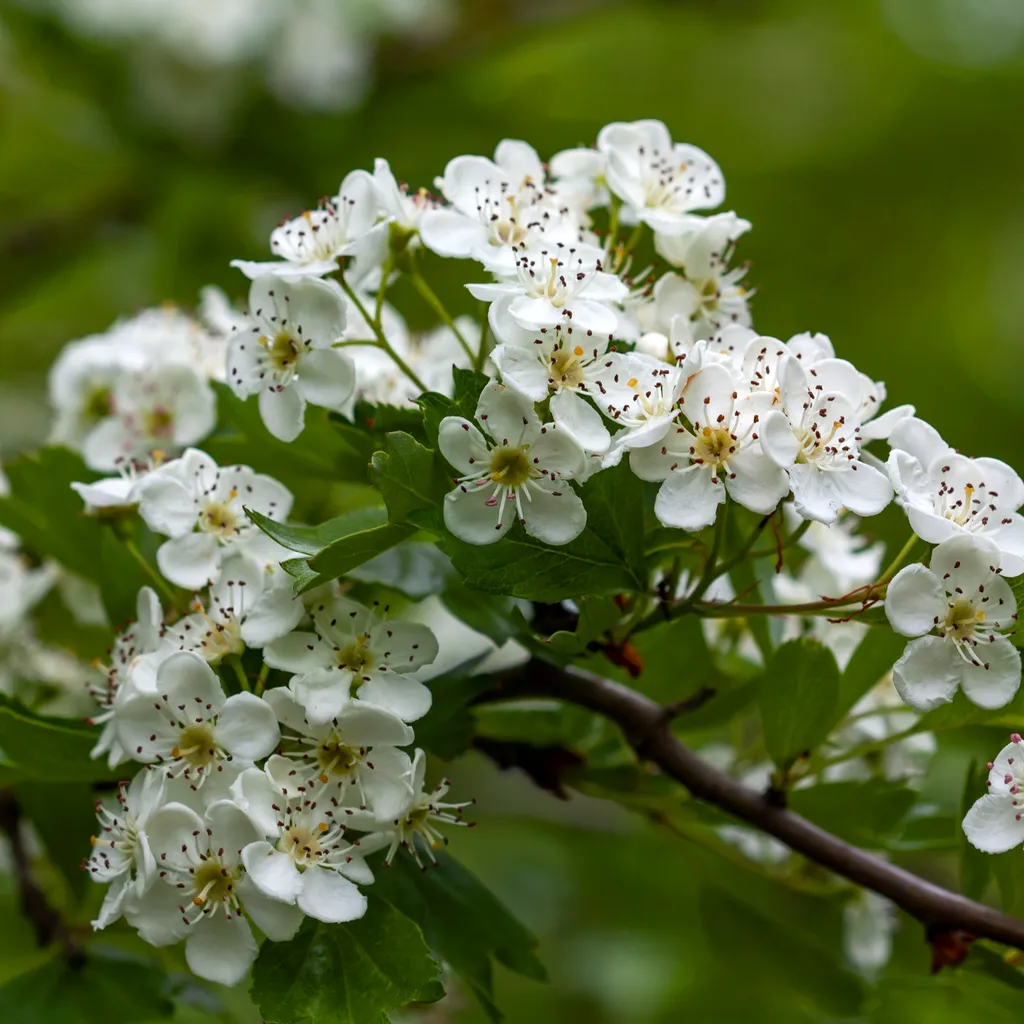Though a single tree may grow to 12m (40ft), hawthorn (Crataegus monogyna) is most often found tightly packed in our hedgerows. Its dense, fast-growing branches have long been recognised as a perfect natural barrier, and some 200,000 miles of hawthorn hedges are estimated to have been planted during the 18th and 19th centuries.
Find out more about the hawthorn tree with our 60-second guide.
How to identify the hawthorn tree
Hawthorn blossom
As our winters shorten, so the white flowers of the hawthorn dazzle ever earlier each spring, and though we still refer to May blossom, in some parts of the country, the petals are no more than a browning carpet when the month itself finally arrives.

Hawthorn and wildlife
In spring the hawthorn is prime avian real estate. The twists of fissured bark and stiffened, unyielding thorns create perfect nesting habitat for small birds, safe from the beaks of corvids and too tight for a female cuckoo to sneak in and lay her deceit. A weasel or adder might be lithe enough to snake through the tangled mass, but larger mammals, such as foxes, martens and pet cats can do nothing but wait until the young birds fledge.
Almost as soon as they unfurl, the leaves will be alive with caterpillars - many moth species are almost wholly dependant upon the hawthorn. The flowers provide pollen for insects such as bees, but also dormice who will not long have risen from hibernation.
Hawthorn leaves and berries
Unlike the blackthorn, the leaves of hawthorn – which are deep-lobed, shiny and green – appear before the blossom. Later in the year, as summer gives way to autumn, red berries appear, ripening and deepening in colour through to the winter.
